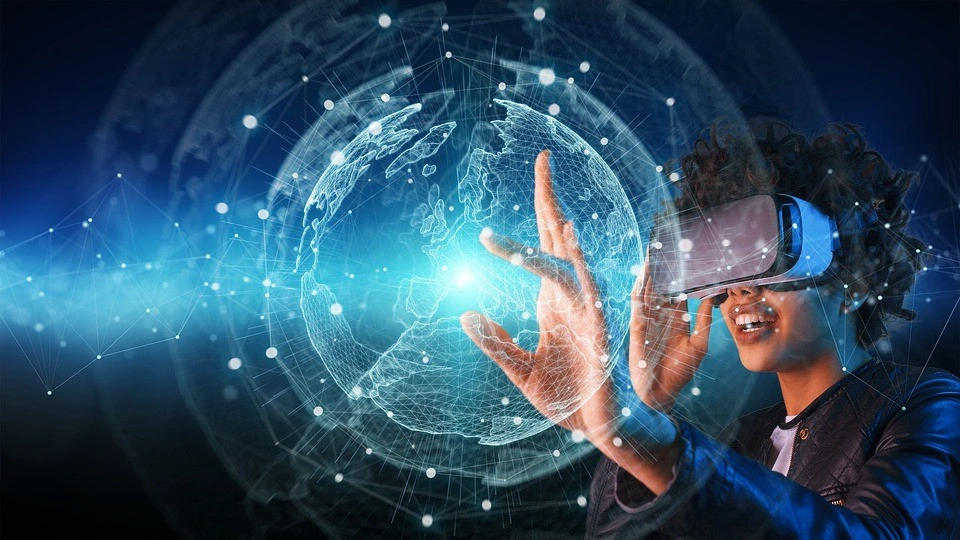Vaçpr: The Future of Integrated VR & AR Technologies

Introduction
In today’s fast-paced, technology-driven world, new terminologies and concepts are constantly emerging, often leading to significant shifts in various industries and aspects of daily life. One such term that has been gaining traction recently is “vaçpr.” This term, though seemingly obscure at first glance, represents a multifaceted idea that holds considerable importance in contemporary discourse. In this article, we will delve deep into the concept of vaçpr, exploring its origins, its applications across different fields, and its broader implications for the future.
Understanding Vaçpr: Origins and Definition
The term “vaçpr” is an acronym that stands for “Virtual and Augmented Convergent Productivity and Reality.” This concept encapsulates the integration of virtual reality (VR) and augmented reality (AR) technologies into various productive processes and real-world applications. The idea behind vaçpr is to enhance human capabilities and experiences by blending digital and physical environments, leading to more efficient, immersive, and innovative outcomes.
The Birth of Vaçpr
The origins of vaçpr can be traced back to the rapid advancements in VR and AR technologies over the past decade. As these technologies matured, they began to move beyond entertainment and gaming, finding applications in fields such as education, healthcare, manufacturing, and more. The convergence of VR and AR, coupled with the increasing demand for productivity tools, led to the development of the vaçpr concept. By combining these elements, vaçpr aims to create a seamless interaction between the virtual and physical worlds, enhancing both productivity and reality.
Applications of Vaçpr Across Various Fields
Vaçpr’s potential is vast, with applications spanning numerous industries and sectors. Here, we explore some of the key areas where vaçpr is making a significant impact.
Education and Training
In the realm of education, vaçpr is revolutionizing the way students learn and engage with educational content. Through VR and AR, students can immerse themselves in interactive learning environments, bringing abstract concepts to life. For instance, history lessons can be transformed into virtual tours of ancient civilizations, while biology classes can involve 3D models of human anatomy. This immersive approach not only enhances understanding but also increases student engagement and retention.
Similarly, in professional training, vaçpr enables realistic simulations that allow trainees to practice skills in a safe and controlled environment. Medical students can perform virtual surgeries, pilots can simulate flight scenarios, and engineers can troubleshoot machinery, all without the risks associated with real-world practice. This hands-on experience is invaluable in building competence and confidence.
Healthcare and Medicine
Vaçpr is also making waves in the healthcare sector, where it is used to improve patient outcomes and streamline medical processes. Surgeons can utilize AR to overlay critical information onto a patient during surgery, enhancing precision and reducing the likelihood of errors. VR, on the other hand, is employed in pain management, where patients can be immersed in calming virtual environments to alleviate discomfort during procedures.
Furthermore, vaçpr facilitates remote consultations and diagnostics, enabling healthcare providers to reach patients in remote or underserved areas. By leveraging VR and AR, doctors can conduct virtual examinations, assess symptoms, and provide accurate diagnoses, all without the need for physical presence. This approach not only expands access to healthcare but also reduces costs and resource constraints.
Manufacturing and Industry
In manufacturing and industry, vaçpr is driving innovation and efficiency. AR is used to provide workers with real-time information and guidance, overlaying instructions and diagrams onto their field of view. This reduces the need for physical manuals and minimizes errors, resulting in faster and more accurate assembly processes. Additionally, VR is employed for design and prototyping, allowing engineers to create and test virtual models before committing to physical production. This not only saves time and resources but also enables more iterative and creative design processes.
Retail and E-Commerce
The retail sector is also embracing vaçpr to enhance customer experiences and streamline operations. AR applications enable customers to visualize products in their own environment before making a purchase, whether it’s trying on clothes virtually or seeing how furniture fits in their home. This reduces the uncertainty of online shopping and increases customer satisfaction. Moreover, VR can create immersive shopping experiences, where customers can explore virtual stores and interact with products in a 3D environment, providing a unique and engaging way to shop.
Real Estate and Architecture
In real estate and architecture, vaçpr is transforming how properties are showcased and designed. Potential buyers can take virtual tours of properties, experiencing the layout and ambiance without physically visiting the location. This is particularly beneficial for international buyers or those unable to travel. Additionally, architects use AR to overlay design concepts onto existing structures, allowing clients to visualize renovations or new constructions in context. This interactive approach facilitates better communication and decision-making between architects and clients.
The Broader Implications of Vaçpr
The widespread adoption of vaçpr has far-reaching implications beyond individual industries. It represents a shift towards a more integrated and immersive approach to technology, where the boundaries between the digital and physical worlds become increasingly blurred. This convergence opens up new possibilities and challenges that must be addressed to fully harness the potential of vaçpr.
Enhancing Human Capabilities
One of the most significant implications of vaçpr is its ability to enhance human capabilities. By augmenting our perception and interaction with the world, vaçpr enables us to achieve things that were previously impossible. For example, in healthcare, vaçpr can provide surgeons with superhuman precision and insight, leading to better patient outcomes. In education, it can transform passive learning into active, experiential learning, fostering deeper understanding and creativity. As vaçpr continues to evolve, it has the potential to unlock new levels of human potential and performance.
Ethical and Privacy Considerations
With the increasing integration of vaçpr into our lives, ethical and privacy considerations become paramount. The use of AR and VR involves the collection and processing of vast amounts of data, raising concerns about how this data is used and protected. Ensuring that vaçpr technologies are developed and deployed in a way that respects user privacy and autonomy is crucial. Additionally, there are ethical questions around the potential for addiction or overreliance on virtual environments, which must be carefully managed to prevent negative societal impacts.
Accessibility and Inclusivity
Vaçpr also has the potential to bridge gaps in accessibility and inclusivity. By providing immersive and interactive experiences, vaçpr can cater to diverse learning styles and abilities, making education and training more inclusive. In healthcare, it can extend services to remote and underserved populations, improving access to quality care. However, it is essential to ensure that vaçpr technologies are designed with accessibility in mind, avoiding the creation of new barriers or exacerbating existing inequalities.
The Future of Work and Collaboration
As vaçpr technologies become more prevalent, they will inevitably reshape the future of work and collaboration. Remote work, already on the rise due to recent global events, can be further enhanced by vaçpr, enabling more immersive and interactive virtual meetings and collaborations. Teams can work together in virtual environments, manipulating 3D models and data in real time, regardless of their physical location. This has the potential to increase productivity, foster innovation, and create new opportunities for global collaboration.
Economic and Environmental Impact
The economic and environmental impact of vaçpr is another critical consideration. On one hand, vaçpr can drive economic growth by creating new industries and job opportunities. It can also reduce costs and increase efficiency across various sectors. On the other hand, the production and disposal of VR and AR hardware, along with the energy consumption of these technologies, pose environmental challenges. Developing sustainable practices and technologies within the vaçpr ecosystem is essential to mitigate these impacts and ensure a positive long-term outcome.
Conclusion
The concept of vaçpr represents a transformative shift in how we interact with technology and the world around us. By converging virtual and augmented realities with productivity and real-world applications, vaçpr has the potential to revolutionize education, healthcare, manufacturing, retail, and many other fields. Its broader implications touch on enhancing human capabilities, addressing ethical and privacy concerns, promoting accessibility and inclusivity, reshaping the future of work, and considering economic and environmental impacts.
As we move forward into this vaçpr-enabled future, it is essential to approach these advancements with a balanced perspective. Embracing the potential of vaçpr while addressing its challenges will ensure that we harness its benefits for the betterment of society as a whole. By doing so, we can create a world where the digital and physical realms coexist harmoniously, enhancing our experiences, productivity, and reality in unprecedented ways.
Also Read: Slayunny2: The Digital Phenomenon of Modern Times




